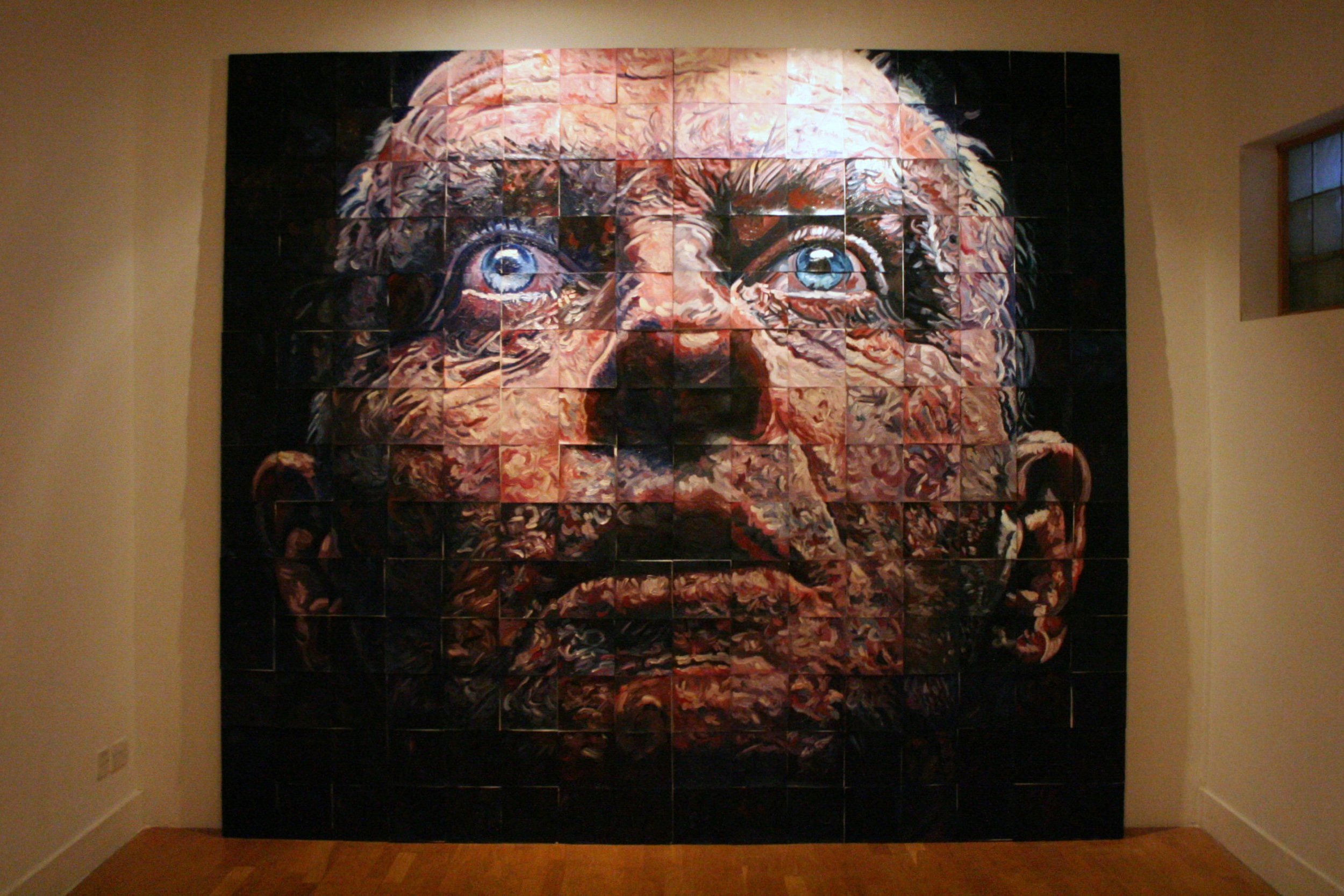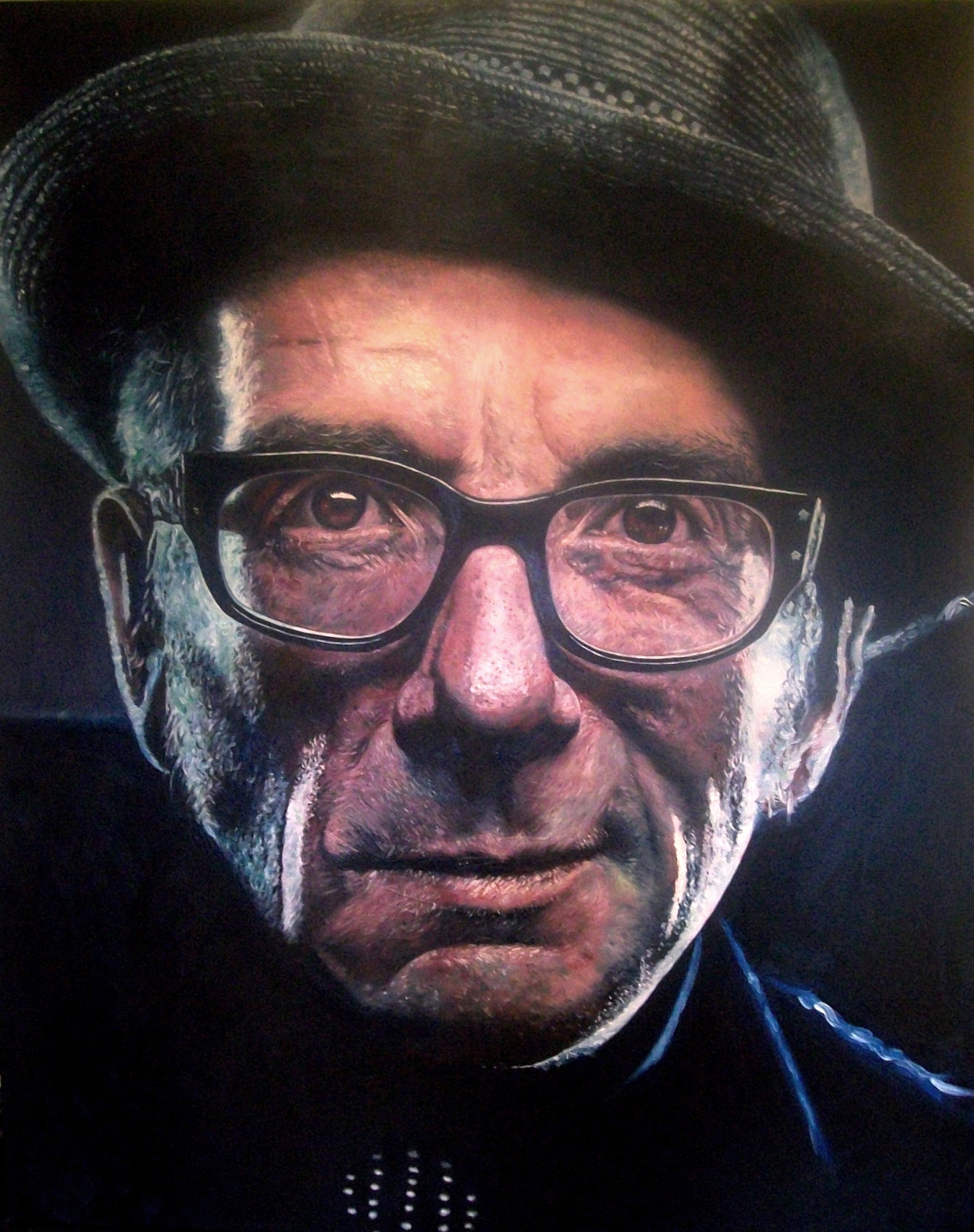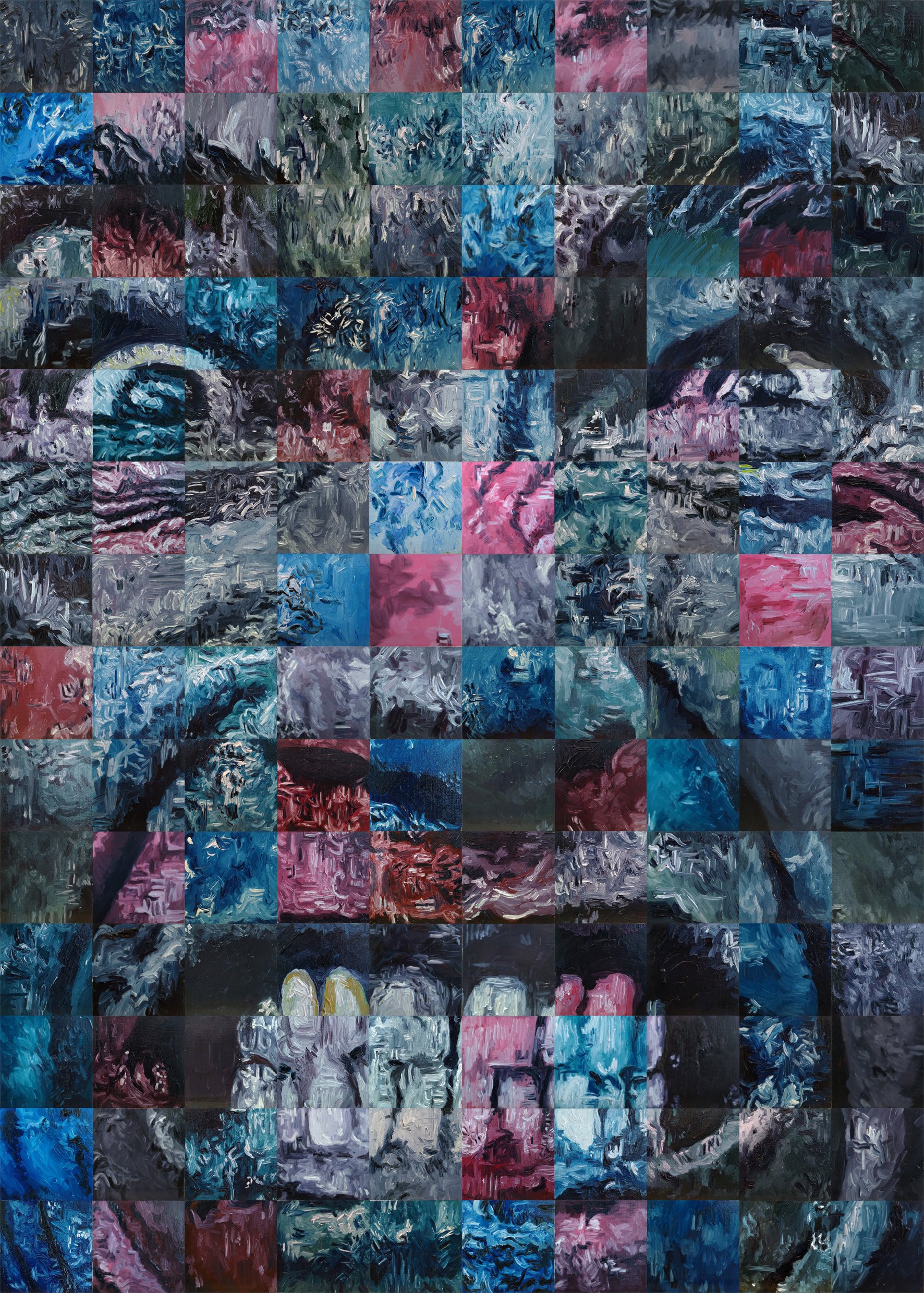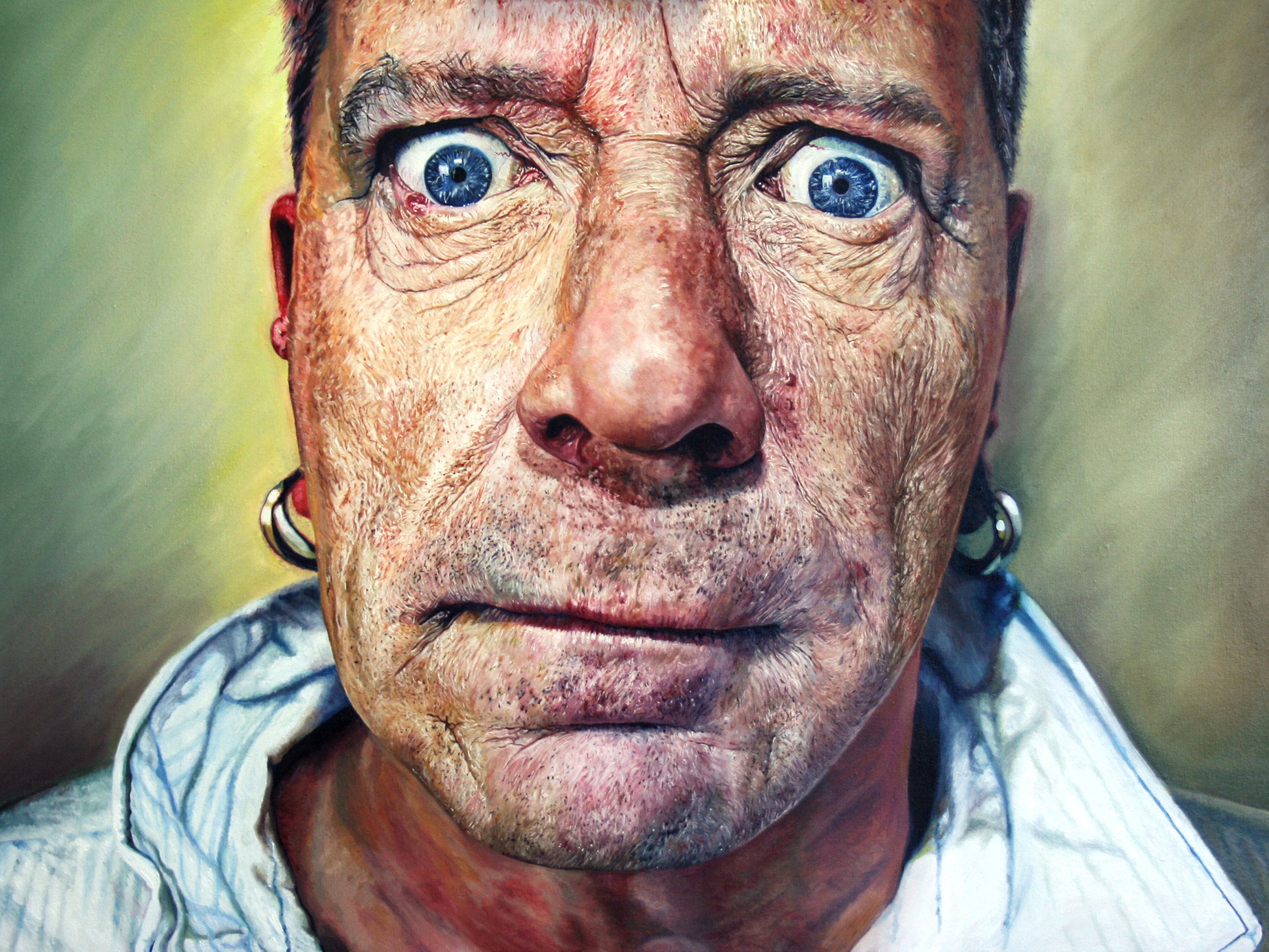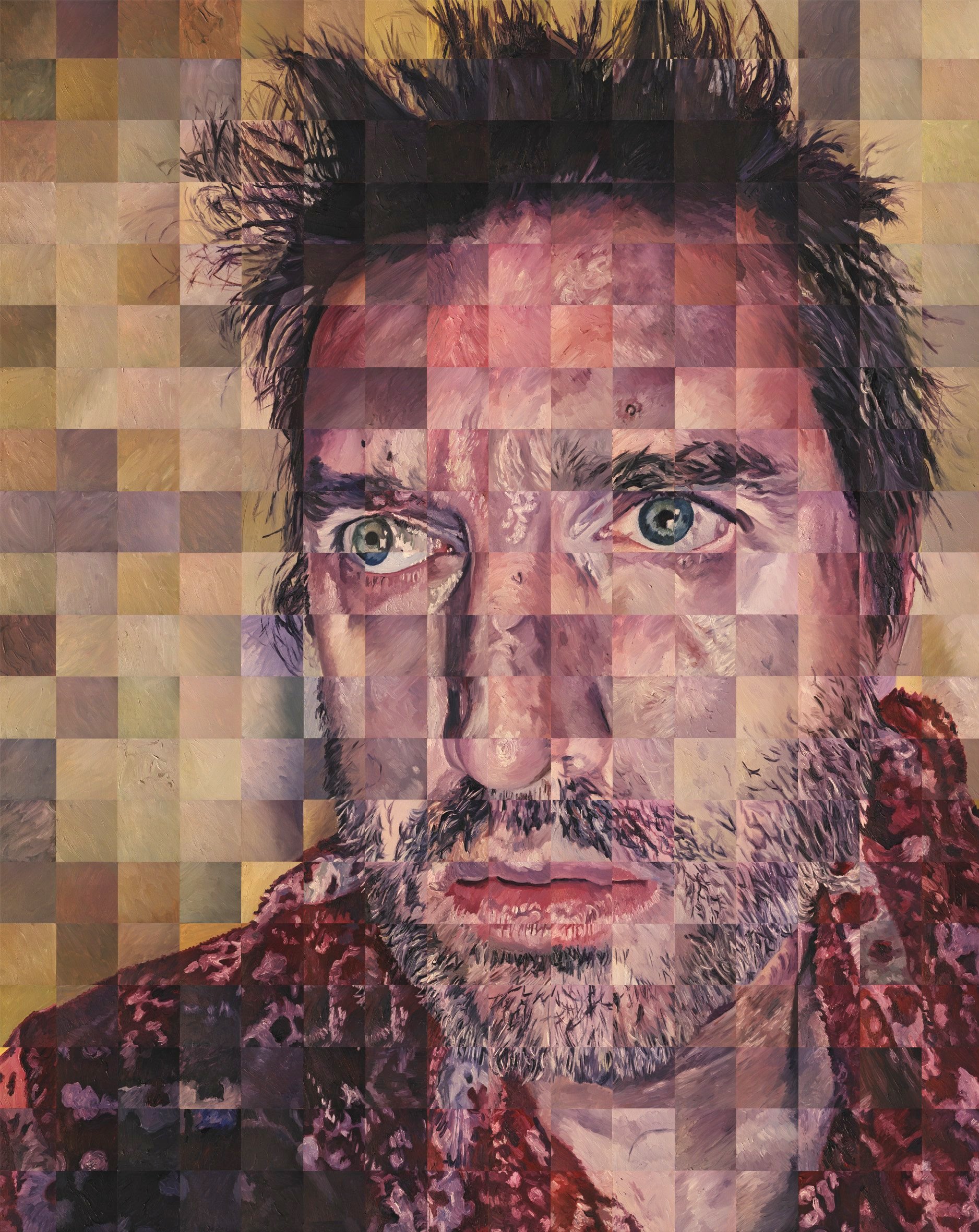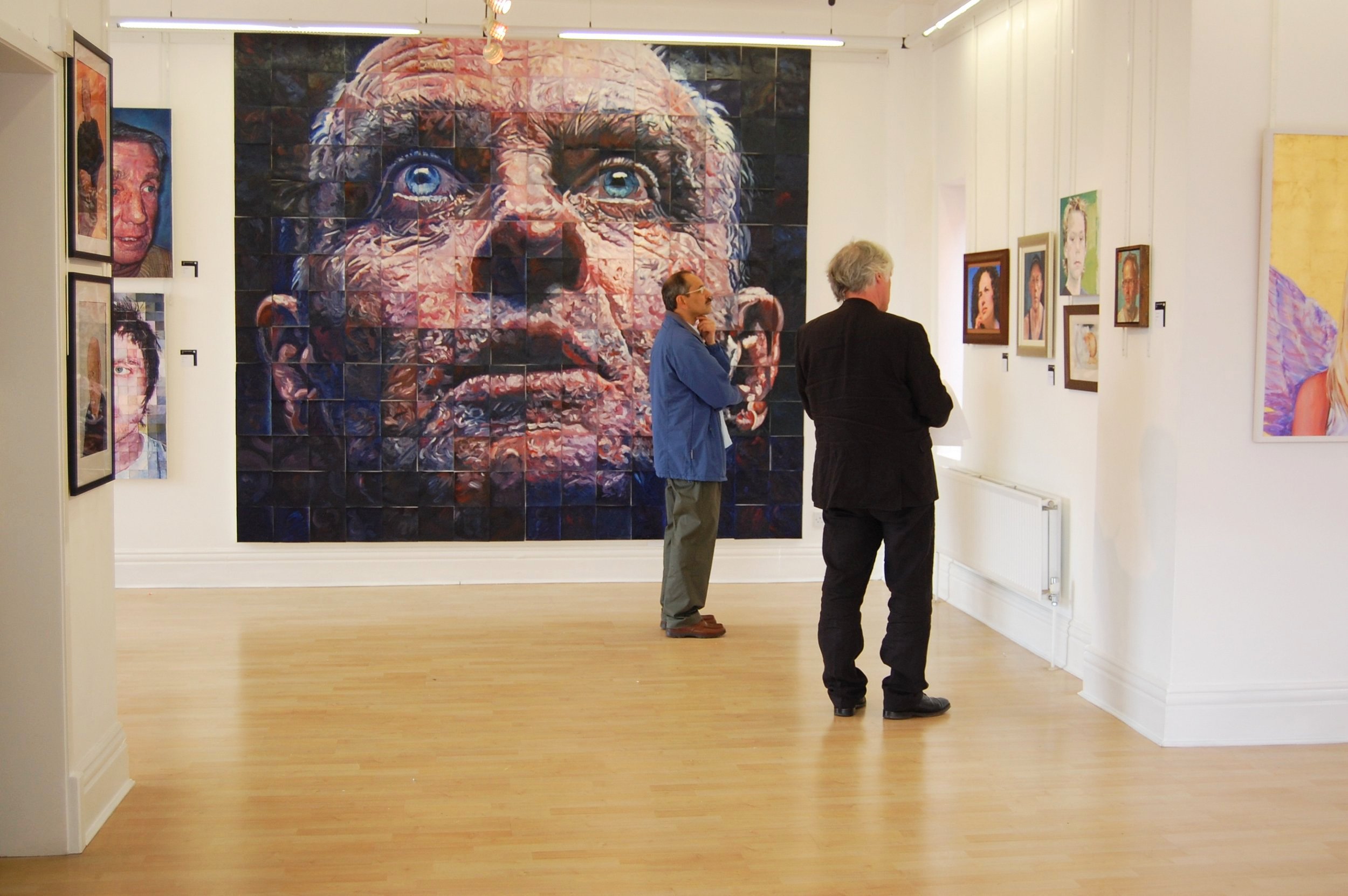Interview
David Sargerson
While David’s current work is portraiture, he doesn’t necessarily consider himself a portrait artist. He works in two styles which may appear to be distinctly different in terms of the viewing experience, but in actuality the processes for both styles are closely intertwined.
David’s ‘mosaic’ or ‘140’ style is concerned with the deconstruction of the painting process. The viewer is presented, not with a painted portrait, but rather a collection of individual abstract images that can be considered in their own right.
As each of the elements of the final portrait are painted in isolation, this highlights any variation in his interpretation of color, tone, light, line, and composition. In this sense, his paintings show a sense of honesty. The mistakes that arise during the process remain uncorrected, and this leads to an interesting visual dance across the surface.
Surprisingly, David’s more traditional portraits follow this exact same process. The key difference is that the mistakes are corrected when painting the portrait as a single image.
David lives and paints in Cheshire, UK. He was awarded the de Laszlo Foundation Award for Outstanding Portraiture from the Royal Society of Portrait Painters in 2012.
What is your background and how did you start your journey in the art world?
“I was born and raised in Hull, in East Yorkshire, England, before leaving to study fine art at the University of Hertfordshire. From the earliest point in my memory, I have always loved drawing and painting. My current paintings are simply a result of that love never going away. I was never the best artist in my class at school, but I’m the one who has persisted with it the most. I honestly believe that art is a practice and not a gift.”
What inspires you most?
“I know this sounds really cheesy but honestly, the actual paint itself and seeing what I can do with it is a great inspiration. Just the smell of fresh oil paint and linseed oil at the start of a new painting session is absolutely intoxicating. The main challenge over the years has been to find a subject matter that allows me to lose myself in the painting process. I’m almost more concerned with the process of painting than I am with the outcome itself.”
“I think of each square in my mosaic paintings as abstract images in their own right. I also love the imperfections when I put all the squares together. I love it when lines don’t quite meet and colors are not quite correct. I believe my ‘mistakes’ make the painting more interesting.”
What themes do you pursue? Is there an underlying message in your work?
“I don’t consciously follow any themes, and I don’t think I’ve ever started a painting with an idea of how I want the viewer to react to it. Once I’ve finished the painting it’s not mine anymore, so I prefer leaving space for the viewer to interpret the painting however they want.
However, having said all that, when I look back on my paintings, I can always see themes around imperfection, something hidden, something revealed and being part of something bigger. I wasn’t conscious of these themes at the time I was painting the piece, but perhaps an artist can’t help but leave clues about themselves throughout their creative process; like fingerprints at a crime scene. I also distinctly remember someone turning to me after viewing my paintings and asked, ‘Why are you so angry?’ I never got to the bottom of what prompted that question.”
How would you describe your work?
“Even though for the last few years my paintings have been concerned with portraits, I’ve never considered myself to be a portrait painter. Instead, my work has always been concerned with the theory of the method and the exploration of the painting process itself. Even some of my more photo-realistic paintings reveal some fairly emotive brush marks on close inspection of the surface.
I am really drawn to the mosaic style of painting which I’ve been creating for a while. Painting this way frees me from having to worry about the bigger picture of the final image. Rather, I can just focus on each small square at a time.”
Which artists influence you most?
“The artists I find inspiration from change all the time as my paintings evolve. The artists that I probably keep going back to are Willem de Kooning, Ivon Hitchens, Gillian Ayres, and Ellsworth Kelly”
What is your creative process like?
“First, I’ll get an idea for a new painting. Then I’ll procrastinate and overthink it for about 6 months before starting the painting. During that time, I manage to successfully convince myself that I’m working out logistical issues in my head. There is actually quite a lot of preparation that goes into my paintings, which can often be an obstacle to getting started with the important business of applying paint to a surface.
I’m currently procrastinating over adopting a looser style of painting that will allow me to be a bit more spontaneous.”
What is an artist’s role in society and how do you see that evolving?
“This is a tough question, and I’m tempted to say that it needs better people than me to answer it. As my inspirations and artistic process are fairly selfish, I’m also tempted to say that it’s not really a concern of mine. When I think about it though, these days art is valuable in providing a visual counterpoint to the bombardment of advertising that fills our lives. The artist’s role is to create something unique, considered, and tangible in a world falling over itself to get to the next ‘new’ thing, only for that thing to be replaced by something else in 6 months.
Good art will never be disposable. There’s a billion iPhones out there, but only one Mona Lisa. The best art captures a moment in time, whether it’s trying to or not. In a world that seems to keep speeding up, art slows life back down again. An original one-of-a-kind piece of art has infinitely more value than the latest mass produced must-have ‘Insta-worthy’ product, regardless of the price tags.”
Have you had any noteworthy exhibitions you'd like to share?
“Undoubtedly, the highlight of my artistic career so far has been when one of my paintings was selected for the annual Royal Society of Portrait Painters exhibition. I was over the moon just to be part of the exhibition, so I was blown away when I was awarded a silver medal prize as well. You can view this here.”
Website: www.davidsargerson.com
Instagram: @davidsargersonartist


